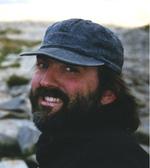Sedimentology and Stratigraphy
, tahickson@stthomas.edu
University of St. Thomas, St. Paul, MN
a Private four-year institution, primarily undergraduate
.
Summary
This course covers the basics of fluid flow and sediment transport, sedimentary structures and textures, and-forming the bridge between modern landforms and ancient rocks-depositional sedimentary environments. The course is designed as a "learning-centered" experience where there are three very well-defined objectives for students to attain. There is a series of three projects that are designed to give students practice in doing the things specified in the class goals. The instructor then provides the students the content that they need to be able to complete the projects.
Course Size: less than 15
Course Context:
This is junior-level course for geology majors. The prerequisite is one of our introductory geology courses: Physical Geology, Environmental Geology, Earth's Record of Climate, Geology of the National Parks, or the Science of Natural Disasters. The course has a strong writing component, and serves as a prerequisite for upper level courses in petrology, structural geology, advanced field methods, and a senior seminar. The course has a required three-hour lab and two, weekend-long, required field trips.
Faculty Notes
I had to relinquish a lot of control when I redesigned this course: no more Powerpoints, no more weekly labs, etc. It became a semester-long group discussion and work effort. This does not mean that I gave up structure. I felt a strong need to have a well-structured course that covered the range of content I wanted. To achieve this, I developed a very detailed course concept map that I posted in the classroom for all to see and use. This helped keep everyone on track and gave us all the 'big picture.' Each of the projects had a handout that summarized its goals and expectations. Finally, I created session-by-session outlines that guided me through each project. These were critical. They contained specific learning objectives for the day, activities that I intended to pursue, materials that I would need, and an outline of how much time I expected to devote to each part of the session. In implementing the course, I also had to continually keep students informed of the reasons behind the PBL format and to be very aware of issues that were causing frustration or concern. read more...
Course Goals:
--Given an outcrop, 1D/2D section, correlation diagram, or other representation of a stratigraphic section, interpret the depositional history of the sequence and develop a sound hypothesis about the relative importance of sediment supply, subsidence, and/or base level in creating the sequence.
--Given a tectonic setting, predict what types of sedimentary processes and depositional environments would result and what their stratigraphic signature would be.
--Design, carry out, and analyze an experiment that focuses on a sedimentary process.
How course activities and course structure help students achieve these goals:
I have organized the course into four, large projects, all of them designed to give students practice completing each of the goals outlined above. These projects build in complexity, such that by the end of the course, I should be able to give students an unknown stratigraphic section and they should be able to (1) create an internally consistent interpretation of it at a level appropriate to their skill level in geoscience; (2) infer a reasonable tectonic setting for the sequence; and (3) clearly elucidate, through a brief write-up, how experimental sedimentology has been used to support some or all of their interpretations.
Skills Goals
See Course Goals
How course activities and course structure help students achieve these goals:
See Course Goals
Attitudinal Goals
I believe that sed/strat is where students learn to view the world as a geologist: making careful observations, linking these observations to detailed interpretations of earth surface processes, and, finally, taking disparate, incomplete data and creating an internally consistent interpretation of the overall geological setting.
How course activities and course structure help students achieve these goals:
All of the course projects are centered on honing the skills outlined above and are the driving force behind the design of these projects. If students satisfactorily complete the projects, I believe that they will have achieved the goal outlined above. In addition, I try to explicitly tell the students in the course that this is what I'm trying to do: effectively turn them into real geoscientists.
Assessment
I used a range of assessment techniques in this course. Each of the projects had separate write-ups or some kind of final product (the last project required a GSA-style poster). These write-ups could be revised with new knowledge gained from later parts of the course and each had a solid grading rubric. Some of the specific in-class activities related to the projects were handed in and I commented on them, but I typically did not assign a grade. Finally, I developed a
final exam (Acrobat (PDF) 811kB Jul1 05) that specifically tested their ability to achieve the over-arching goal of the course: they were given a strat column from an area they had never seen before and they had to integrate the course's knowledge to interpret the depositional environments present in the column. At the end of the course, I required students to hand in copies of all three of their projects in a portfolio, with any revisions highlighted; I have kept these portfolios in an effort to assess the evolving effectiveness of the course.
read more... Syllabus:


